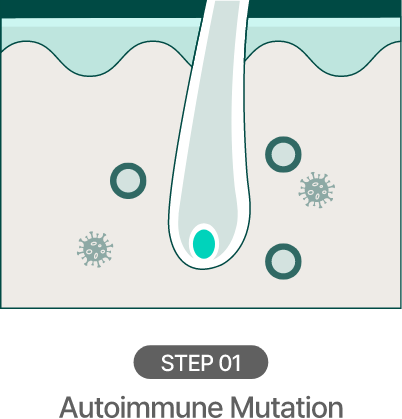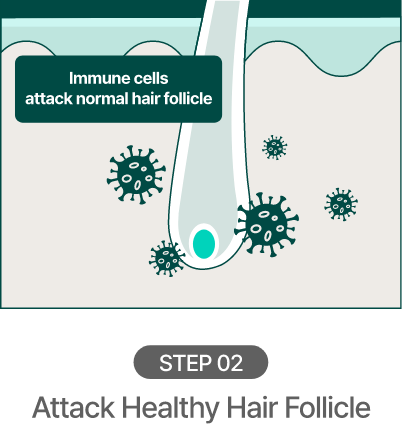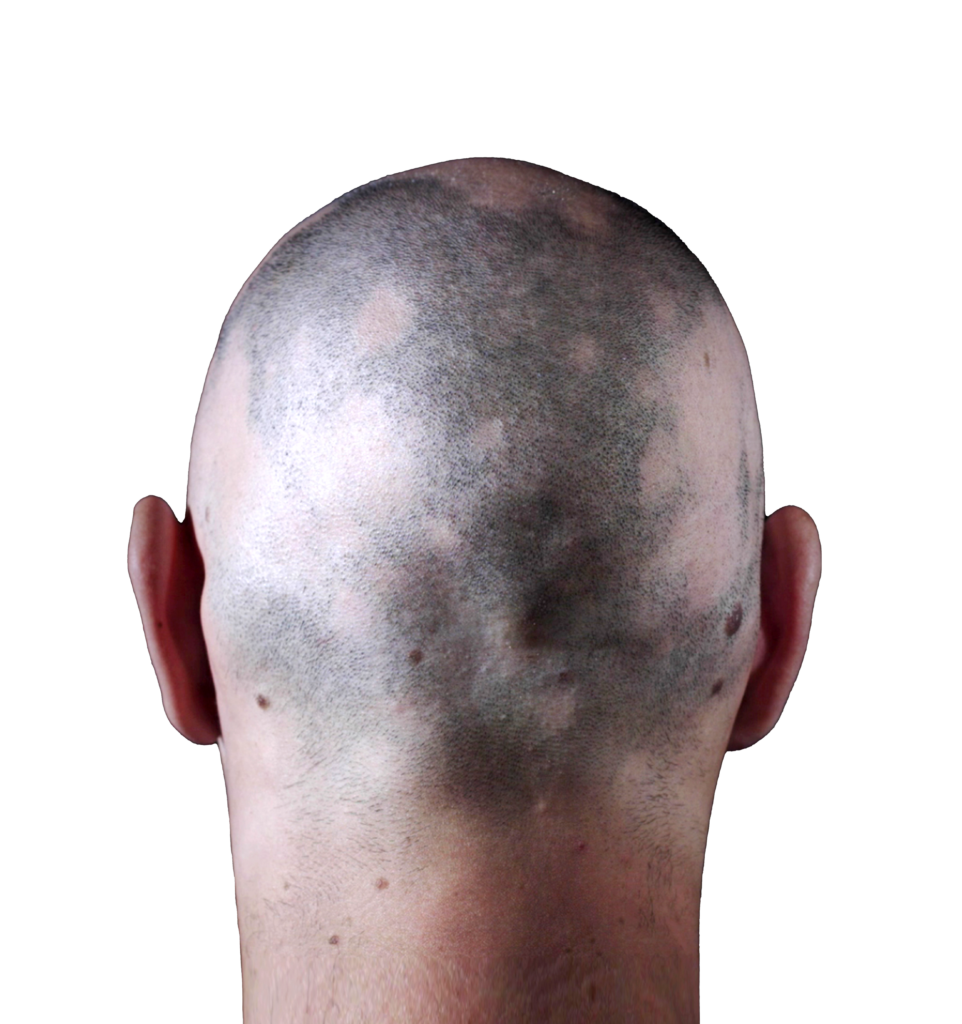Understanding the causes of hair loss is essential for its treatment
What are the types and causes of hair loss?
There are various types and causes of hair loss.
It can be classified in various ways depending on how it is classified, here, it will be classified into androgenetic alopecia, alopecia areata, and female alopecia.
Understanding the causes of hair loss is essential for its treatment
What are the types and causes of hair loss?
There are various types and causes of hair loss.
It can be classified in various ways depending on how it is classified, here, it will be classified into androgenetic alopecia, alopecia areata, and female alopecia.
Androgenic Alopecia - Male Pattern Baldness.

Androgenic Alopecia - Male Pattern Baldness
Androgenic alopecia is the most common type of hair loss, accounting for 60%-70% of all hair loss cases.
(Approximately 70% in men and 40% in women)
Androgenic alopecia is characterized by a receding hairline in an “M” shape and hair thinning at the crown. Over time, the hair loss progresses from the forehead to the crown.

Causes of Androgenic Alopecia
Causes of Androgenic Alopecia

It is hair loss caused by the male hormone testosterone being converted into dihydrotestosterone (DHT) by a specific enzyme (5-alpha reductase). Due to this, the hair follicle shrinks, and the lifespan of the hair follicle is reduced, leading to hair loss.
The 5-alpha reductase enzyme is mainly found in the prostate, hair follicles, and sebaceous glands. Especially in the forehead, M-shaped area, and crown part of the scalp, DHT is produced and accumulated in large amounts.

Androgenic alopecia









Alopecia Areata
Alopecia Areata
Alopecia Areata is characterized by sudden, coin-sized (1.5-3cm) patches of hair loss with distinct boundaries. Often, there are no noticeable symptoms, so many people only become aware of it when someone else points it out. Alopecia Areata can occur in all age groups and has a tendency to recur.

Causes of Alopecia Areata



The main causes of Alopecia Areata are not primarily due to genetic factors or infections, but rather, it is mostly attributed to severe stress resulting in abnormalities in the immune system, leading to autoimmune diseases. The immune system’s primary role is to attack foreign invaders such as bacteria and viruses. To do this efficiently, it’s crucial for the immune system to distinguish between self and non-self. However, in autoimmune diseases, the immune system mistakenly recognizes its proteins as enemies, leading to inflammation.
Alopecia Areata affects approximately 0.1-0.3% of the population, and treatment can be quite challenging. If not treated early, it can occasionally progress to alopecia totalis.

Alopecia
areata
Alopecia areata








Female Pattern Baldness

Female Pattern Baldness
Female pattern baldness typically manifests from the mid-20s to menopause, characterized by general hair thinning and reduced hair density. The main feature is the widening of hair loss, often starting at the crown or the parting line of the scalp. As time passes, the balding becomes mor noticeable, making the scalp in the crown area increasingly visible.
In the case of female pattern baldness, the hairline at the forehead is often well- preserved. It is believed to be because the tissue around the frontal area of women is inhibited from DHT production due to estrogen.

Causes of Female Pattern Baldness

1. The effect of DHT, a secondary metabolite of excessive male hormones secreted in women
: After menopause, there is a rapid decrease in female hormones, which makes it difficult to suppress the function of the male hormone, androgen, as effectively as before. This hormonal imbalance leads to female pattern baldness, accounting for about 40% of all cases in women.
2. Acquired causes
: Stress, extreme diets, frequent dyeing, and perms can damage hair follicles.
3. Scalp atrophy caused by a decrease in scalp collagen and reduced dermal tissue thickness.
: In such cases, the dermal layer generally becomes thinner, causing hair follicles to atrophy. This leads to hair becoming progressively thinner, showing symptoms similar to resting phase alopecia.

Female pattern hair loss
Female pattern
hair loss








다양한 탈모의 원인
"Various Causes of Hair Loss"
Increased DHT or higher levels of 5-alpha-reductase enzyme raise the likelihood of hair loss.
Mainly caused by fungi and bacteria, and occasionally by mites
Due to a lack of vitamins B, zinc, and iron.
Such as antihypertensive drugs, diabetes medications, and cholesterol-lowering drugs.
Hair loss commonly occurs during radiation therapy and chemotherapy.
Injury or pressure to the hair and hair follicles.
Organic solvents and toxic substances.
The Cause of Alopecia Areata
Stress primarily causes Alopecia Areata
Hair loss due to hormonal changes during pregnancy and menopause.
Hormonal Imbalance
Excess sebum causes scalp inflammation, damaging hair follicles and leading to seborrheic alopecia.












